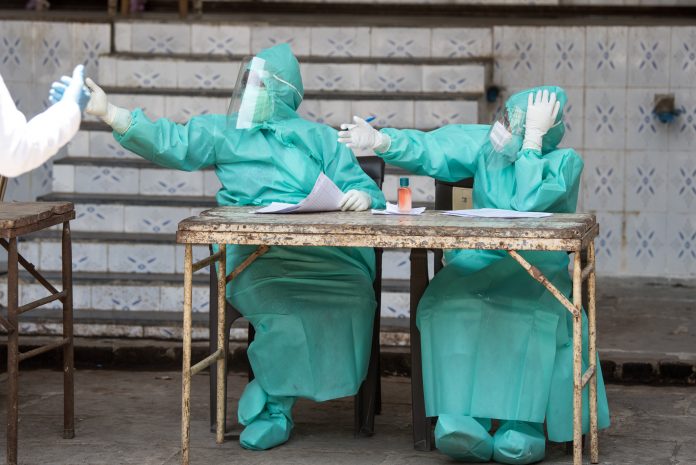We reflect on the work of the Molecular and Cellular Biosciences division (MCB), especially in context of the “complex biological web” of a global pandemic
According to the U.S National Science Foundation (NSF), the MCB is a division that aspires to achieve “a coherent understanding of the complex biological web of interactions that is life is a major challenge of the future”. [1]
The existence of COVID-19 comes from an environmental breach, which means that the connections between living things, the changing conditions of climate change, and future human behaviour can feasibly decide if and when another virus jumps from animal to human.
How is MCB fighting a global pandemic?
The current global pandemic, ongoing despite improvements in Global North countries, is a darkly urgent example of a complex biological web. The spread of the virus highlights why it is crucial to understand how a global ecosystem, defined in health terms as more of an interlinked connections between international communities, really works.
The work of the MCB has recently included significant breakthroughs in understanding how the virus physically works, which could help to form the bedrock of future strategy against a similar viral outbreak.
Manish Parashar, director of NSF’s Office of Advanced Cyberinfrastructure, said: “As the COVID-19 pandemic continues to ravage the world, NSF-funded research and cyberinfrastructure are providing a new understanding of the disease that will enable us to ultimately defeat it.” [2]
Isolating and stopping the infection gateway in COVID
A study, supported by the NSF, created a detailed visualisation of the SARS-CoV-2 spike protein that latches onto cell receptors. This work has led to the discovery of infection gateways, due to the brilliance of researchers, collaboration between institutions and the mission of the MCB.
Senior author, Rommie Amaro at UC San Diego, said: “We essentially figured out how the spike actually opens and infects. We’ve unlocked an important secret of the spike in how it infects cells. Without this gate the virus basically is rendered incapable of infection.” [3]
Creating two types of inhalable vaccine
In another project funded by the NSF, a team found that it was plausible to create an inhalable vaccine spray. In fact, the study proposed two methods that are equally scalable and require no cold storage. At this stage of trials, both created a strong antibody response in rodents.
One method employs modified bacteriophage particles, also known as phage particles, can be inhaled to deliver protection to the immune system via the lungs. The other delivers injectable, harmless adeno-associated virus phage particles that directly encode protection against the virus in immune cells. This MCB work directly addresses both the living connections between microscopic elements of fighting COVID and issues presented by resources – as some lack the appropriate cold storage supply chains, leading to an unfair lack of access to vaccines for countries in desperate need.
What about the Evolutionary Processes Cluster?
While it is crucial to create research that tackles the current pandemic, the division is not limited to fighting only what currently exists. Through the Evolutionary Processes Cluster of project funding, several fascinating studies have been given the green-light.
For instance, one US-UK collaboration on the Evolution of Infectious Disease has been given financial support. Beginning in early 2020, the $1,609,049.00 award will be used by the University of California-Berkeley to figure out some of the fundamental questions about heterogeneities and diversity when it comes to infectious disease. [4]
Another project, begun in 2019, is currently examining how socio-ecological consequences unfold in Marine Protected Areas – especially when it comes to small-scale fishing communities, who often depend on fishing for both food security and income. The $631,787.00 Evolutionary Processes Cluster award is essential to understanding marine issues, which connect in theory to the food supply chains and trade-systems of the globe. This climate-change and conservation issue is one of the key problems facing the world, as ecosystems shift and fail under the severity of changing atmospheres.
Wilson Francisco, a program director in NSF’s Division of Molecular and Cellular Biosciences, said: “This work is a great example of how simulations could help us understand biological processes and aid in the development of therapies.” [5]
[1] https://www.nsf.gov/bio/about.jsp
[2] https://www.nsf.gov/discoveries/disc_summ.jsp?cntn_id=303411&org=MCB&from=news
[3] https://www.nsf.gov/discoveries/disc_summ.jsp?cntn_id=303411&org=MCB&from=news
[4] https://www.nsf.gov/discoveries/disc_summ.jsp?cntn_id=303136&org=MCB&from=news











